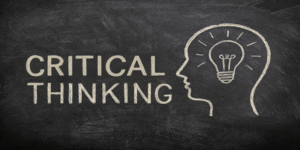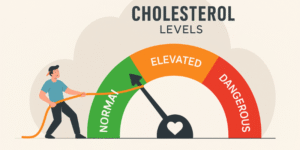Group behaviour is a fundamental dimension of Organisational Behaviour (OB). It focuses on how individuals act collectively when they form groups and teams, and how these dynamics influence organisational performance. Scholars such as Robbins and Judge (2021) argue that understanding group behaviour is essential for fostering collaboration, building trust, and creating a positive organisational climate. Group behaviour includes topics such as leadership, communication, conflict resolution, and teamwork, each of which plays a central role in organisational success.
Formation of Groups and Teams
Groups and teams are integral to modern organisations. They form either formally, when organisations establish project teams, task forces, or committees, or informally, when individuals naturally connect through shared interests and relationships (Forsyth, 2018). Both types of groups influence organisational outcomes, as formal groups drive performance objectives, while informal groups foster social support and knowledge exchange.
The process of group development has been widely explained through Tuckman’s model (1965), later refined by Tuckman and Jensen (1977). This framework identifies five stages:
- Forming: Members establish relationships and explore group purpose.
- Storming: Conflicts and disagreements emerge as individuals assert their perspectives.
- Norming: Cohesion develops as group norms and roles are established.
- Performing: The group achieves synergy and focuses on achieving objectives.
- Adjourning: The group dissolves upon task completion.
Research has shown that groups that successfully progress through these stages tend to demonstrate higher effectiveness and satisfaction (Wheelan, 2009). Managers can support this process by fostering clear goals, trust, and shared accountability.
Leadership and Group Behaviour
Leadership is pivotal in shaping group behaviour and performance. Effective leaders navigate groups through developmental stages, resolve conflicts, and sustain motivation. Northouse (2018) distinguishes between transformational leadership, which inspires and empowers employees, and transactional leadership, which relies on rewards and penalties.
Transformational leadership has been shown to enhance group cohesion, trust, and creativity, making it particularly valuable in today’s dynamic business environment (Bass and Riggio, 2006). On the other hand, transactional leadership is effective in structured contexts requiring compliance and efficiency.
Leaders also influence group norms by modelling behaviours and setting expectations. Yukl (2013) notes that leaders who provide constructive feedback, promote ethical behaviour, and empower participation foster more resilient and productive teams. Moreover, research on emotional intelligence suggests that leaders with strong self-awareness and empathy are more capable of managing group dynamics and sustaining positive climates (Zahoor, 2025).
Communication in Groups
Communication is the lifeblood of group functioning. It facilitates the sharing of knowledge, coordination of tasks, and resolution of problems. As Keyton (2017) explains, effective communication is crucial for developing trust, avoiding misunderstandings, and ensuring that all voices are heard.
In today’s organisations, communication occurs across multiple platforms—face-to-face interactions, emails, collaborative software, and virtual meetings. Brown (2019) argues that barriers to communication, such as cultural differences, unclear messages, or lack of feedback, can undermine group performance.
High-performing teams embrace practices such as active listening, open dialogue, and inclusivity. Empirical research confirms that inclusive communication enhances psychological safety, enabling employees to express ideas without fear of negative consequences (Edmondson, 2012).
Conflict Resolution
Conflict is inevitable in groups due to differences in personalities, goals, and values. However, the way conflict is managed determines whether it becomes destructive or constructive. Rahim (2011) emphasises that constructive conflict resolution strengthens relationships, fosters innovation, and prevents escalation.
Thomas and Kilmann (2008) outline five strategies for conflict resolution:
- Avoiding: Withdrawing from conflict.
- Accommodating: Prioritising others’ needs.
- Competing: Pursuing one’s own objectives assertively.
- Compromising: Seeking a middle ground.
- Collaborating: Working together for mutually beneficial solutions.
Collaborative approaches are most effective in sustaining group cohesion and long-term performance. In contrast, avoidance and competing strategies may undermine trust if overused (DeChurch and Marks, 2001). Managers therefore need to equip teams with conflict management skills and promote an environment of open dialogue.
Teamwork and Collaboration
Teamwork represents the essence of group behaviour in organisations. Kozlowski and Ilgen (2006) argue that effective teamwork requires shared responsibility, interdependence, and collective problem-solving. High-performing teams display trust, mutual respect, and a shared vision (Levi, 2015).
Research demonstrates that teamwork enhances innovation, adaptability, and productivity by integrating diverse perspectives (Edmondson, 2012). For instance, Weinberger and Carter (2025) show that social networks within organisations mediate the relationship between teamwork and performance by facilitating knowledge sharing.
Collaboration is particularly important in cross-functional and multicultural teams. Effective managers foster collaboration by setting collective goals, encouraging diversity of thought, and rewarding team-based outcomes (Alsalman and Chyad, 2025). In doing so, they create environments where individuals feel valued and empowered to contribute.
Contemporary Perspectives on Group Behaviour
Recent research has expanded traditional understandings of group behaviour by highlighting the role of soft skills, emotional intelligence, and team coaching. Bajpai (2025) notes that soft skills such as empathy, communication, and conflict resolution are critical in modern workplaces. Similarly, Bagherieh Mashadi and Azizi (2025) emphasise that team coaching enhances collective learning and adaptability.
Moreover, the rise of remote and hybrid work has introduced new challenges in sustaining group cohesion and communication. Studies highlight that virtual teams require intentional strategies to build trust, maintain engagement, and prevent isolation (Gibson and Gibbs, 2006). Managers must therefore adapt leadership and communication strategies to digital contexts.
Understanding group behaviour is essential for building positive and productive work environments. The study of how groups form, communicate, resolve conflict, and collaborate reveals critical insights for managers and leaders. Effective leadership fosters cohesion, communication sustains collaboration, conflict resolution prevents divisions, and teamwork drives innovation and performance.
In today’s rapidly changing organisational landscape, managers must embrace inclusive leadership, foster open communication, and invest in conflict management and teamwork skills. By doing so, they can create organisational cultures that thrive on collaboration, trust, and shared success.
References
Alsalman, F. A. and Chyad, S. A. (2025) ‘Impact of emotional intelligence on leadership and team dynamics in agile software engineering projects’, IEEE Access. Available at: https://ieeexplore.ieee.org/abstract/document/10973058/ [Accessed 20 Aug 2025].
Bagherieh Mashadi, A. and Azizi, M. (2025) ‘Conceptualizing team coaching: from origin to evolution’, Journal of Entrepreneurship Development, 28(2). Available at: https://jed.ut.ac.ir/article_101736.html [Accessed 20 Aug 2025].
Bajpai, M. (2025) ‘Soft skills development: A crucial part of modern dentistry’, Indian Journal of Dental Sciences, 17(4). Available at: https://journals.lww.com/ijds/fulltext/2025/04000/soft_skills_development__a_crucial_part_of_modern.10.aspx [Accessed 20 Aug 2025].
Bass, B. M. and Riggio, R. E. (2006) Transformational Leadership. 2nd ed. Psychology Press.
Brown, D. R. (2019) An Experiential Approach to Organisation Development. Pearson.
DeChurch, L. A. and Marks, M. A. (2001) ‘Maximizing the benefits of task conflict: The role of conflict management’, International Journal of Conflict Management, 12(1), pp. 4–22.
Edmondson, A. C. (2012) ‘Teamwork on the Fly’, Harvard Business Review. Available at: https://hbr.org/2012/04/teamwork-on-the-fly [Accessed 15 June 2024].
Forsyth, D. R. (2018) Group Dynamics. 7th ed. Cengage Learning.
Gibson, C. B. and Gibbs, J. L. (2006) ‘Unpacking the concept of virtuality: The effects of geographic dispersion, electronic dependence, dynamic structure, and national diversity on team innovation’, Administrative Science Quarterly, 51(3), pp. 451–495.
Keyton, J. (2017) Communication and Organisational Culture: A Key to Understanding Work Experiences. SAGE Publications.
Kozlowski, S. W. J. and Ilgen, D. R. (2006) ‘Enhancing the effectiveness of work groups and teams’, Psychological Science in the Public Interest, 7(3), pp. 77–124.
Levi, D. (2015) Group Dynamics for Teams. SAGE Publications.
Northouse, P. G. (2018) Leadership: Theory and Practice. 8th ed. SAGE Publications.
Rahim, M. A. (2011) Managing Conflict in Organisations. Transaction Publishers.
Robbins, S. P. and Judge, T. A. (2021) Organisational Behaviour. 18th ed. Pearson Education.
Thomas, K. W. and Kilmann, R. H. (2008) Thomas-Kilmann Conflict Mode Instrument. Xicom, Incorporated.
Tuckman, B. W. and Jensen, M. A. (1977) ‘Stages of small-group development revisited’, Group & Organisation Studies, 2(4), pp. 419–427.
Weinberger, C. and Carter, D. (2025) ‘Social networks and team performance’, Oxford Research Encyclopedia of Business and Management. Available at: https://oxfordre.com/business/abstract/10.1093/acrefore/9780190224851.001.0001/acrefore-9780190224851-e-443 [Accessed 20 Aug 2025].
Wheelan, S. (2009) Creating Effective Teams: A Guide for Members and Leaders. SAGE Publications.
Yukl, G. (2013) Leadership in Organisations. 8th ed. Pearson Education.
Zahoor, H. (2025) ‘Emotional intelligence at work: The hidden driver of organisational behaviour’, Pioneer Research in Health and Social Sciences, 5(1). Available at: https://www.allsciencesacademy.com/_files/ugd/13252f_ac950c51720a419693a361fb2889006a.pdf [Accessed 20 Aug 2025].









